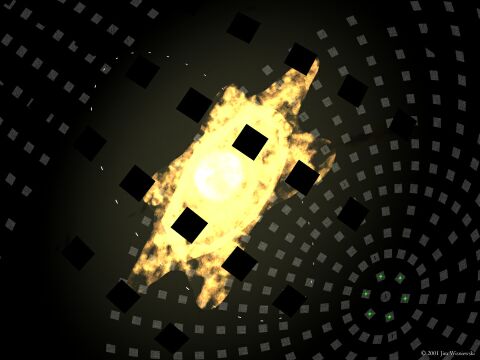BY LETTER
Star Lifting
Technology > Application > Construction
Technology > Technology Type or Material > Drytech/Hylotech
Technology > Application > Megascale Engineering
Technology > Technology Levels > Transapientech / Godtech / Clarketech
Technology > Technology Levels > Ultratech
Technology > Technology Type or Material > Drytech/Hylotech
Technology > Application > Megascale Engineering
Technology > Technology Levels > Transapientech / Godtech / Clarketech
Technology > Technology Levels > Ultratech
Removing matter from a star using the power of its own luminosity |
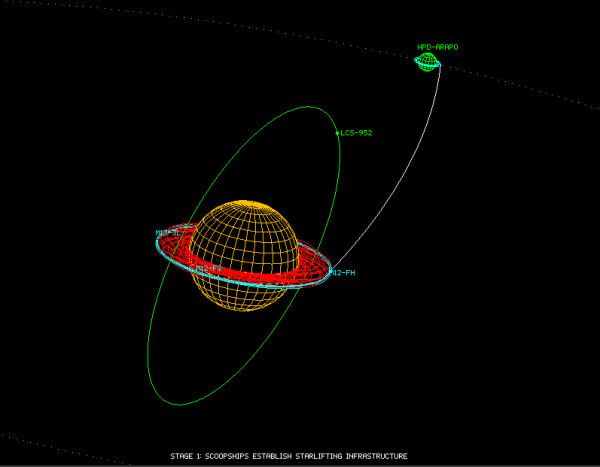 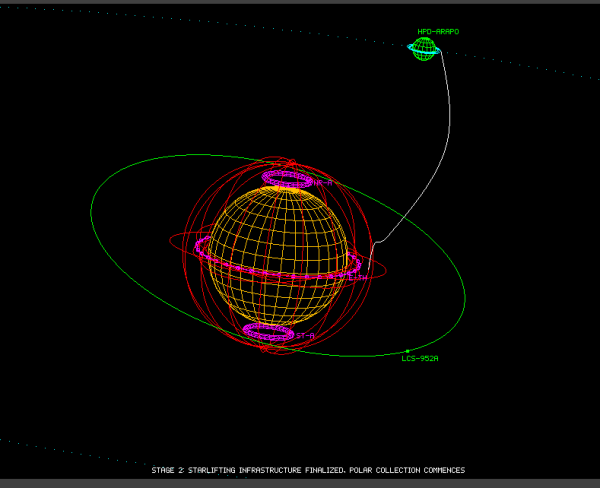 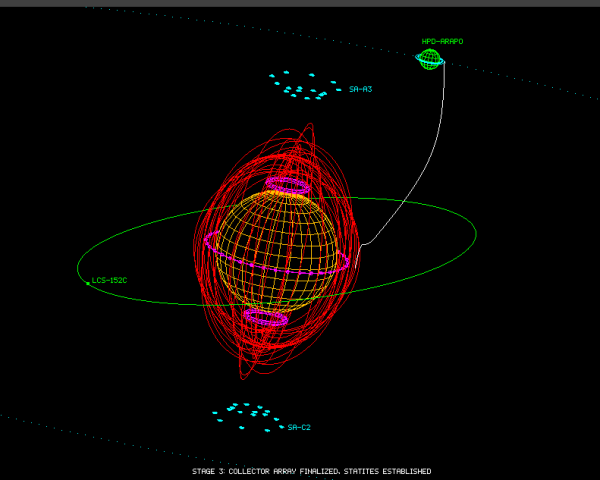 Images from Alex Mulvey |
Starlifting, Star Lifting
Starlifting is the removal of material from a star for industrial use or for stellar husbandry. The energy required for this process comes from the star itself, either directly from its luminosity or from the fusion or conversion of the lifted material.There are a multitude of processes available for the harvest and extraction of stellar matter. The simplest method is to use a fleet of scoopships using magnetic ramscoop technology, lifting material from near the chromosphere towards collection points further away.
Other methods of star lifting involve manipulating the star so that its matter is ejected into space, specifically conically at the poles or radially off the equator, accomplished using various arrangements of orbiting magnetic array. These arrays can be used to accelerate matter away from the star, either at the equator or at either of both of the poles.
Scoopship extraction
Scooping a star's matter directly without the use of orbiting magnetic arrays can be achieved by simply using a fleet of scoopships utilising ramscoop technology. This is a flexible strategy because it requires no existing infrastructure. Particularly prominent among the factions which utilise scoopships in this fashion are the SunMiners. Relatively small-scale scoopship extraction is a common first stage for larger and more organized solar collection methods. Typical procedure is for the sunscoop to orbit elliptically about the star, the perihelion of its orbit bringing it into the atmosphere of the sun to scoop up matter, then the matter is released towards the aphelion. In common with other scoopships the material can either be been processed onboard the ship or released to a nearby processing facility. In both cases the scoop method allows the matter to be released into any orbit immediately, so scoop orbits are typically close to parallel with the intended destination's momentum.Polar extraction
 Image from Steve Bowers | |
| The star-lifting array around Polaris squeezes this brilliant star using intense magnetic fields, causing mass to be ejected from the polar regions | |
The collection process will typically involve ramscoops encircling the sun, either orbiting individually in polar orbits or supported in structural arrays by mass stream rings. Ramscoop statites in higher positions may be utilized to collect excess volumes of matter that slip through the initial scoops. In their polar orbits the rampscoops can swoop through the ejecta cloud to collect matter, then process and launch it outside of the region. By nature of this orbit, the initial velocity is around perpendicular with the star's equator, so a package sent to the outer system must perform high energy accelerations to escape. In the case of mass streams, the mostly stationary ramscoops collect the matter after which it is moved and processed along the mass stream structure, eventually launched in a similar fashion to the method involving polar orbits. These polar methods are advantageous due to the unlikelihood of worlds or habitats to be in the immediate path of any ejecta.
Radial extraction
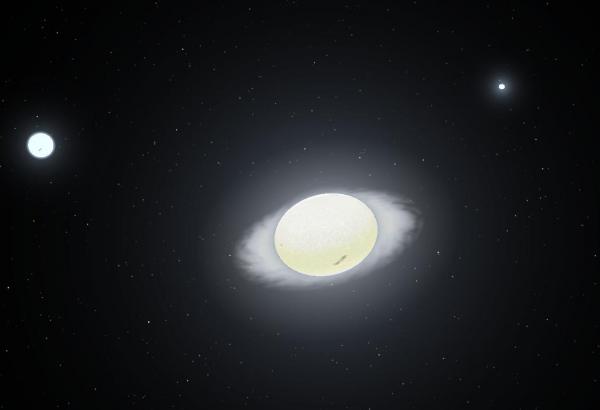 Image from Steve Bowers | |
| Magnetic arrays around Dschubba accelerate this already fast-spinning star, causing mass to be ejected from the equator | |
In order to accelerate the extraction of material from a star, the luminosity of the star can be reflected back towards the surface, causing the chromosphere to heat up and expand. This makes it easier for the magnetic acceleration of material at the equator, or (in the case of polar extraction) the acceleration of material towards the poles. Some star lifting rigs employ all these techniques simultaneously.
Transapientech and godtech methods of starlifting include a range of metric technology, perhaps the most well-attested being the Grazer wormhole, which can extract matter from a star and transport it to a distant location almost instantly.
Related Articles
- Dschubba
- Gati Hertzsprung-Russell Engineers
- Grazer Wormhole
- Matrioshka Hypernode
- Matrioshka Micronode
- Polaris
- Procyon (Alpha Canis Minoris)
- Sirius (Alpha Canis Majoris)
- Starbooster
- Stellar Engineering - Text by M. Alan Kazlev
Modifying or customizing a star in any manner. Could be for the purposes of stellar husbandry, or for more exotic purposes. - Stellar Husbandry
- SunMiner
Appears in Topics
Development Notes
Text by Alex Mulvey and Steve Bowers
Initially published on 31 December 2001.
Article updated August 2009, images by Alex Mulvey added February 2021
Initially published on 31 December 2001.
Article updated August 2009, images by Alex Mulvey added February 2021
